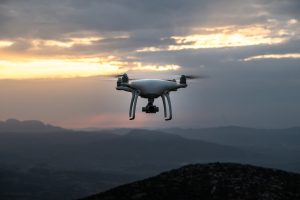 Capturing an aerial shot of an wildfire with a drone may sound like a once-in-a-lifetime opportunity for photographers. However, the Federal Aviation Administration (FAA) is urging the public to stop flying unmanned aircraft systems (UAS) over such areas.
Capturing an aerial shot of an wildfire with a drone may sound like a once-in-a-lifetime opportunity for photographers. However, the Federal Aviation Administration (FAA) is urging the public to stop flying unmanned aircraft systems (UAS) over such areas.
According to the Insurance Information Institute (III), 3.1 million acres of land have burned thus far in 2017 — and we still have several months remaining in the year. To put that number into perspective, only 2.3 million acres were burned in 2016 through this same period. Of course, there are many different causes of wildfires, some of which include arson, unattended campfires, lighting strikes, burning trash and improper disposal of lit cigarette butts.
The good news is that fire management agencies throughout the country are working around the clock to extinguish existing wildfires and protect against new ones. Among the most powerful fire-fighting tools at their disposal is aircraft. Whether it’s a helicopter, airtanker, etc., fire management teams use aircraft to identify the location of fires and the direction in which they are traveling. Airtankers and helicopters are also used to drop massive loads of water, either directly on the fire itself or nearby brush that hasn’t been engulfed yet.
In order for fire management teams to use aircraft for this purpose, however, the skies must be free of drones and other UAS. The presence of UAS poses a serious risk to firefighters in the skies. When a fire management agency detects a UAS, it must ground all nearby airtankers, helicopters and other fire-fighting aircraft. Once the skies have been deemed clear and safe, the agency can send its aircraft back into the air.
Drones hovering above wildfires is actually more common than you may realize. There have already been 17 confirmed reports of unauthorized UAS flights over wildfires in Arkansas, Arizona, California, Colorado, Nevada, New Mexico, Texas, Utah and Washington. Those 17 instances have resulted in the temporary grounding of fire-fighting aircraft on 14 occasions.
“Most members of the public would never dream of standing in front of a fire engine to stop it from getting to a wildfire, but that’s essentially what they’re doing to aerial firefighting aircraft when they fly a drone over or near a wildfire,” said Dan Buckley, Chair of the National Multi-Agency Coordinating Group at the National Interagency Fire Center in Boise, Idaho.
The bottom line is that if you have a drone, don’t fly it over a wildfire.



